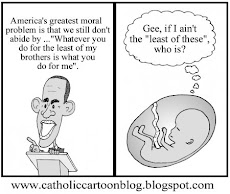"America’s Catholic bishops commissioned John Jay College of Criminal Justice to study the sex-abuse crisis in the American Church. Last November, the bishops received a briefing on some conclusions researchers have derived from their report, “The Nature and Scope of the Problem of Sexual Abuse of Minors by Catholic Priests and Deacons in the United States.”They say the crisis has nothing to do with homosexuality.
Margaret Smith, a data analyst, said researchers believe “the idea of sexual identity [should] be separated from the problem of sexual abuse.” She insists that no connection has been found “between homosexual identity and an increased likelihood of sexual abuse.” This was seconded by the study’s principal investigator, Karen Terry: “Someone can commit sexual acts that might be of a homosexual nature, but not have a homosexual identity.”
Some greeted these statements with skepticism; not least because the data Smith, Terry, et al. have gathered indicate that more than 80 percent of all clerical abuse cases involve male homosexual activity. Dr. Terry’s point is that abuse may be more about opportunity than preference. Since during the period covered by the inquiry (1950 to 2002), priests had more frequent interaction with boys than with girls, overwhelmingly male-male nature of the abuse doesn’t prove the abusers themselves were homosexual. . . .
"But here are some data not in the report: The Centers for Disease Control puts the homosexual population in America at very precisely 2.3 percent (and no credible study claims a number higher than 3 percent). To be sure, opportunity plays a role in many crimes, but given that 90-plus percent of American men are heterosexual it seems out of proportion that 80-plus percent of clerical abuse cases (more than 4000 are included in the John Jay study) should involve men and boys. This is especially so since, according to the Department of Health and Human Services, girls are more than four times likelier to be the victims of sexual abuse than are boys in the population at large.Whether these cases were pedophilia or hebephilia (those who prefer pubescent kids) or ephebophilia (attraction to older adolescents) is not at issue here, although it’s surely significant that half of those abused by priests were between the ages of 11 and 14."
So girls are four times more likely to be abused in the population at large (which is over 95% heterosexual) but yet 80% of clerical abuse cases involve boys. The point here is not that all homosexuals are child abusers; rather, the point is that the relevance of homosexuality to this situation seems to be systematically hidden most of the time. Minor writes:
"Consider this: According to one scholarly journal, Archives of Sexual Behavior, the tendency towards homosexuality among pedophiles is fifteen- to twenty-times higher than in the population at large. The Journal of Sex Research has noted that the proportion of homosexual pedophiliac offenses “is substantially larger than the proportion of sex [offenses] against female children among heterosexual men . . .” And in a superb essay in Homiletic & Pastoral Review, Brian W. Clowes and David L. Sonnier make an important connection that in “the general population of males who sexually abuse minors, only one in seven molest boys. In the population of [sex-abusing] priests . . . six in seven molest boys.”
Most homosexual men aren’t pedophiles, of course, yet it seems likely that when in any population there’s a disproportionate spike in sexual-abuse statistics affecting boys, homosexuality belongs on the list of causes."
Exactly: what is being overlooked here is that the lesson we ought to learn from the clerical abuse tragedy is that homosexuality is part of the problem in the Roman Catholic priesthood and needs to be addressed. The priesthood is no place for a man who has deep seated homosexual tendencies that he acts on or allows such tendencies to take precedence over his other beliefs and moral standards. And lo and behold it turns out to be Pope Benedict XVI himself who has issued instructions to bishops, seminaries and those responsible for priestly formation to exclude such men from the priesthood.
"The Church will no longer be a refuge for homosexuals. The Congregation for Catholic Education has published its “Instruction Concerning the Criteria for the Discernment of Vocations with regard to Persons with Homosexual Tendencies in view of their Admission to the Seminary and to Holy Orders,” another long-titled document with a different conclusion than John Jay’s:
[It is] necessary to state clearly that the Church, while profoundly respecting
the persons in question, cannot admit to the seminary or to holy orders those
who practice homosexuality, present deep-seated homosexual tendencies, or
support the so-called “gay culture.”
Read the rest here.
It was Pope Benedict XVI who was most responsible for this policy. Now why would so much of the criticism of the Church be carefully phrased so as to exclude from view the homosexuality aspect of the cause of the problem? And why would the Pope who clearly sees the link between homosexuality and abuse be the one who, using Alinsky tactics, is isolated, targeted and attacked in today's media? And why would liberal activists who supposedly are so concerned about the child abuse problem be simultaneously be pushing for the normalization of homosexuality and same sex marriage? Is it possible that they have turned what was potentially their biggest public relations nightmare into a tool with which to attack the conservative hierarchy - with the help of an ideologically committed left-leaning news media?





No comments:
Post a Comment